Before we reach the Baltic Sea, our trip begins in Rostock, home to a mish-mash of architecture, sculptures and fountains. Our tour will also take us through what used to be the GDR, German Democratic Republic, aka former East Germany, before the Wall came down in 1989. The city, like others on the Baltic coast, still shows off the monumental Gothic architecture of the Hanseatic era (1400s).
The largest church in Northern Germany, Marienkirche (St. Marien church), towers in Gothic glory next to a small goat fountain from the East German era. The church was built in 1230. The goat is from the 1970s.


Ratschow-Haus from the 15th cetnury, now Library of the City–important government documents kept here:

Another GDR fountain celebrates the workers of the world, fishing and farming:

A hotel spangles with East German festivity:

Rathaus, or Town Hall, a garish mixture of pink plaster and red brick turrets built in 1270:

We walk along the waterfront in drizzle. Thankfully, we find a cozy corner table overlooking the water, in an Italian restaurant, and fortify ourselves for our first bike kilometers tomorrow.
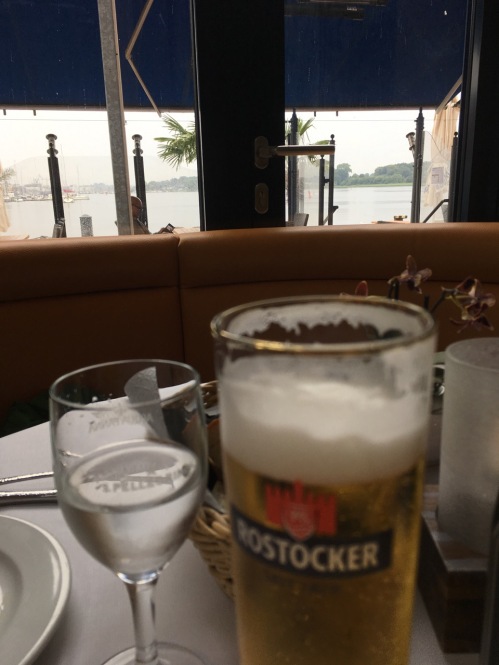
On the way back to our hotel, we see the Steintor, one of the old stone gates of the city:

After a bit of morning misdirection (Mary blames the bike tour book), we ride on the correct path to the sea. First, we pass through lovely fields, forests, and find the sea on the edge of a campground, just over the dune.

After riding by the sea, we turn inland to Wustrow, on the bay. We have the best room, with a small balcony overlooking this harbor.

We see another large Gothic brick church and enjoy another Italian meal. After breakfast among the sea shells, blocks and tackle, net tatters, and photos of sailboats and iceboats, we’re off to our next town.
As you read in the Natural World , this day is Mary’s favorite. It begins with a pause for this horse-drawn wagon filled with children singing camp songs.

Cool weather, tailwinds, and paved bike paths!

Not too many other people on the path. Mary secretly hopes for a sailboat cruise in the long light of evening at the next port town.
We arrive in Barth to discover a town as grim as its name. Road construction stymies us on busy roads. The hotel is basic, far from the harbor, but at least there is a cat to entertain Lisa while Mary fumbles with the lock and dank garage that holds our bikes for the evening. We ride our bikes to “Thai Asia Bistro,” but the smell of rancid oil mixed with pork, beef and who knows what else quickly drives us back out the door. So we head to familiar ReWe, a German supermarket chain, shiny, new and air-conditioned with many food options. Relieved, we get our food to go, and return to our room overlooking the parking lot to watch the Tour de France. Critically, we also purchase tortilla chips to be smashed in the pannier for mid-morning snacks on the next day.
Up next, another great day of riding by bays, harbors, marshes, and thatched roof houses. Thatched-roof houses are everywhere throughout our days of touring–old houses, new thatched-roof subdivisions, thatched-roof hotels, and assorted collapsing barns.
We also visit the restroom of a lumberjack festival, happening later this summer. Note saws as decoration.

The clouds seem threatening, and the day is a little dark, but we arrive in Stralsund in time for a late lunch at a 1970s-style restaurant. We head to the harbor to figure out the ferry for the next day, but do not figure it out, and spend some time looking at digital (Lisa) and paper (Mary) maps to determine the location of our hotel.
View of St. Jakobi church in Alte Stadt (old town):

We ride past the Alte Stadt, and another lake, drag our bikes into the hotel cellar, marginally aided by the 8-inch ramp next to the stairs. But what a view from our room! The trees, the lake, the Gothic spires of the Alte Stadt. A perfect backdrop for recovering while watching the Tour de France.
Hotel room view:

St. Marien Lutheran Church, built before 1300. Between 1549 and 1647, it was the tallest building in the world with a bell tower at 103 meters. Parts of the church have been rebuilt ove the centuries.
Walking to dinner view:
We walk to dinner by the harbor, admire the fountain in the lake and studiously avoid Asian bistros. Bellini’s welcomes us with delayed but delicious Italian food. It’s a lovely summer evening in a university town.
We are überpünktlich (“over on time” or extremely early) for the ferry ticket office in the morning, then we wait another 45 minutes for the ferry.

While waiting on the dock, we chat with friendly Berlin cyclists who tell us we will love the Island of Hiddensee, And we do! No cars allowed to drive on the island–only horses, walking, and bikes.
A bit of biking on bricked bike paths, a bit of hiking to the Leuchtturm (light house), and some lounging on the beach.
Mary goes for a swim. We wait for a ferrry, early early again!

Later the same day, we catch another ferry to Breege. This ferry features an accordion player who serenades passengers from bike deck.
We arrive to the cobblestone dock in Breege, and ride on it just like Tour de France riders do that very same day (Stage 9). We have finally arrived on the Island of Rügen, home to semi-famous seaside resorts.

Our hotel is easy to find, and throbbing with 2 busloads of tourist jubilados (Spanish for retired people) in the buffet line for dinner. It is not a seaside resort, but a friendly family-owned hotel. The owner/manager welcomes us with “I speak English, I am Dutch” and tells us where to put our bikes, and about the buffet. Starving we are, we quickly dump our stuff in our room and head to the end of the now short buffet line. Fish and many styles of potatoes, spargel (white asparagus) soup, and ice cream for dessert.
We avoid the German and Dutch bus tour folks by eating outside with a sliver of the bay visible through the buildings across the street. We take another lovely after-dinner amble along the water in the peaceful village of Breege.


The next day, we follow the short cut recommended in our guidebook, and become lost on a rough cobbled road, followed by a slippery sandy track through fields. We follow various hiking trail signs in an attempt to get to the beech forest and white cliffs which should be the highlight of our trip.
Mary no longer enjoys riding on cobbles on rented tank bike.
Finally, we reach a town and a large parking lot where the National Park shuttle bus stops. Civilization! Salmon sandwiches and coke in the shade of a food truck restore us. We get better directions and ride on a rolling paved road through the forest. Upon recommendation of our Dutch host, we take a dirt road into the forest to Wald (forest) house.
After locking our bikes, we head down the trail and get our first views of the cliffs. Beech trees envelop us with calm, and cleanse us of our morning cranky cobbles.


Refreshed, we cruise downhill to Sassnitz. Foiled by guidebook misdirection again, we ride on more cobbles to the industrial port area. Mary says “Our hotel is up there,” pointing to the hill above the harbor. Lisa gets out her trusty digital phone to guide us to it. We ride along the waterfront, and up another hill (this time on a smooth-ish sidewalk) and arrive at our hotel that time forgot. It is overdone in a weird way that 1950s GDR architecture referred back to some golden era.
But collectibles! We discover two rooms on the first floor filled with cases of small objects from around the world. There’s also a detailed book explaining the collector and his collections – for whoever might be interested.

A groovy pedestrian bridge leads down to the harbor in Sassnitz.

We also learn this used to be a critical port on the Stockholm to Berlin immigration journey, from the 1890s:

After an Italian dinner by the harbor, we watch a large vessel with two-hulls, like a green and white super-sized steel catamaran, circle the harbor waiting for a place to dock. After another similar red vessel departs, the green one ties up.

We identify British accents and ask the man with a suitcase about the type of vessel. “It takes us to the wind farm, it’s ok to say that right?” he says looking toward the German. “Ya.” Baltic Sea commuting! Wind farm engineers work for weeks at a time, like oil rig roughnecks except on sustainable energy platforms. German, British, and Swedish firms own and operate the farms.



On to Binz! The bike route to Binz is first dangerous: we ride on a narrow bridge over a steel grid sidewalk with train tracks below. Then it turns to simply dreary, a paved path through a tunnel of scrubby pine along a busy road. We skip the bleak community of Prora, which was the Nazi and East German summer playground for the privileged of those eras. Its Bauhaus style buildings are in disrepair or gentrified, depending on which part of the beach you visit. Find out more from this Architecture Magazine story.
We park our bikes and stroll along the Binz seaside strand. We see 19th and early 20th century “villas,” small resort hotels that now contain vacation apartments.
The Jetsons apparently also spent some time here:

Everyone must have a beach ticket, and we attempt to pay, but the machine hates us and will not take our Euros.


Away from the busy central area, we sneak across the sand past these cabanas, to dip our toes in the water. After an ice cream snack, we’re on our way to the smaller resort town of Sellin.
We get to our hotel just before it starts to drizzle. Undaunted, we go to the main street for a delicious Italian lunch, then take a stroll to the famous pier, built in 1906 (rebuilt since then). It’s gray and blustery, so we don’t spend too much time. Later in the evening, we return to the beach where a few people still swim at 9 pm.

Rain greets us the next morning, so we greet the narrow-gauge train called Rasender Roland that takes us to Putbus, shortening our 62 km bike ride to “only” 50 km.
A bike car holds our bikes along with a few others. The train is quaint, historic, and cozy until the coal smoke blows into our car, Mary moves to the back of the car to avoid it. A couple of stops later, Lisa joins her. Thank goodness the coal-powered stove is not necessary today.
We ride along double-track through the damp forest, but the rain has gone! In the fields and forests, we see other bike tourists carrying much heavier loads than us. We’re crossing the interior of Rügen which is hillier than the coast. After a couple of hours into the wind, and across the long bridge to Stralsund, we reach civilization and the confounding posted bike signs vs. guidebook directions. One final mis-direction from Mary “No, I’m sure it’s this way,” is corrected after about a mile. And we reach our hotel. No, we will not be climbing stairs to the second floor of the “villa” which is certainly a converted barn. The hotel gives us a regular room instead.
The next morning, we bid “auf wiedersehen” to Stralsund at the Flix Bus stop, in the shadow of St. Marien.


Map of our total route with Fähre (ferry).
© Lisa Howells and Mary Reynolds, 2018
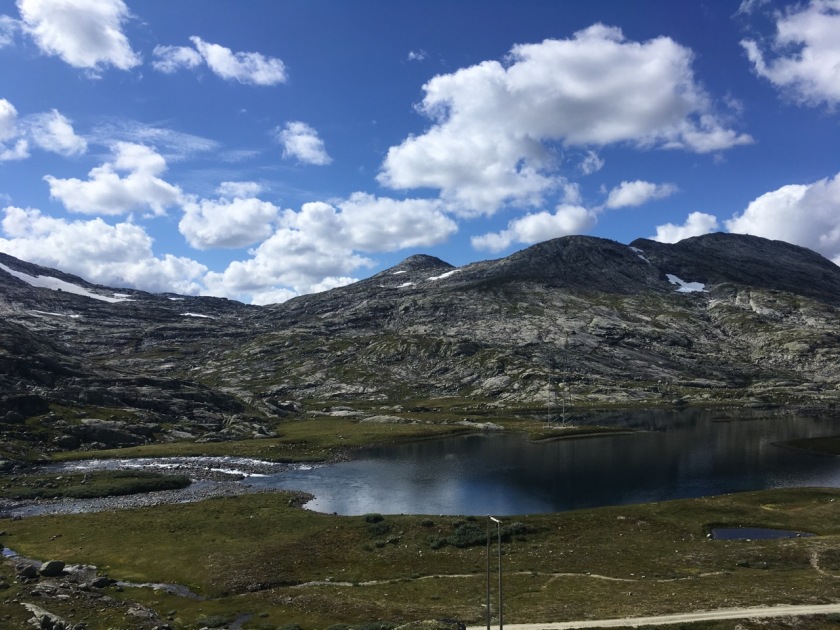





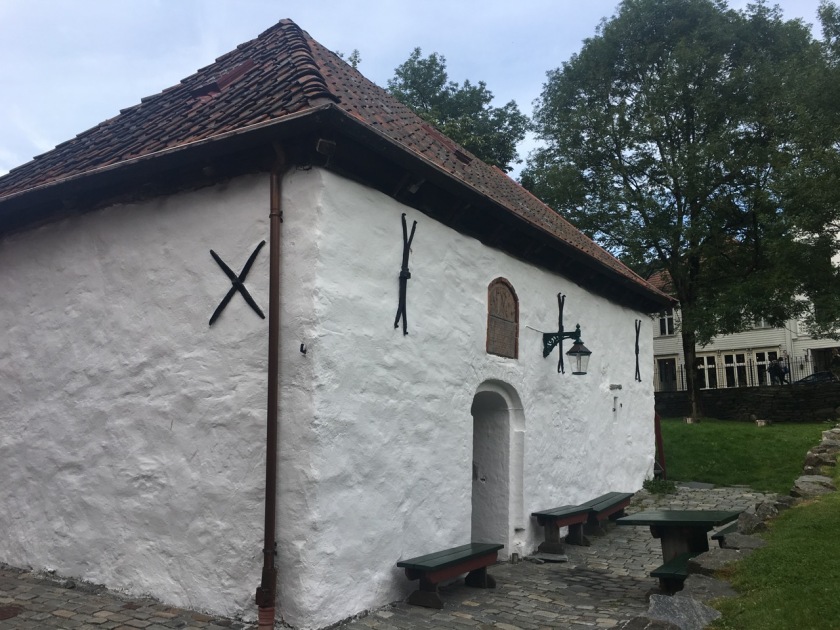



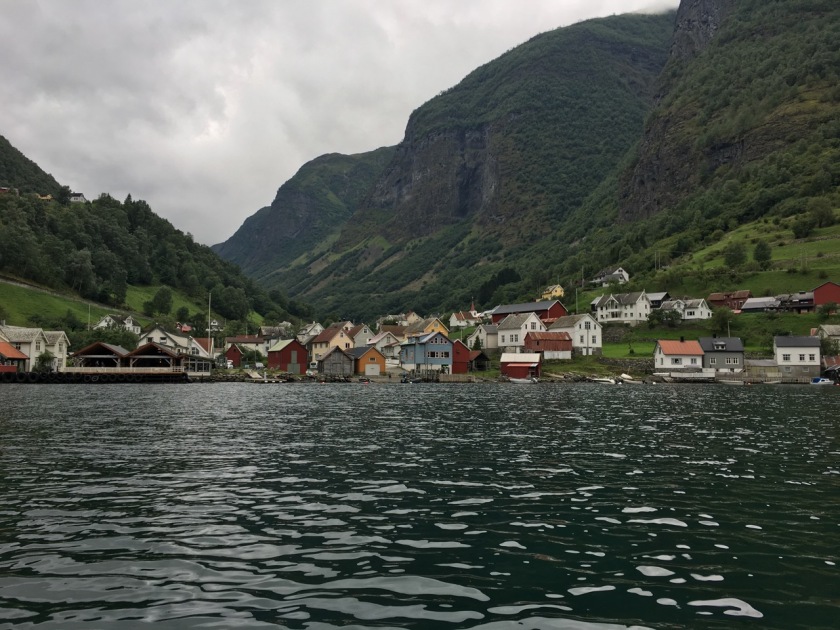

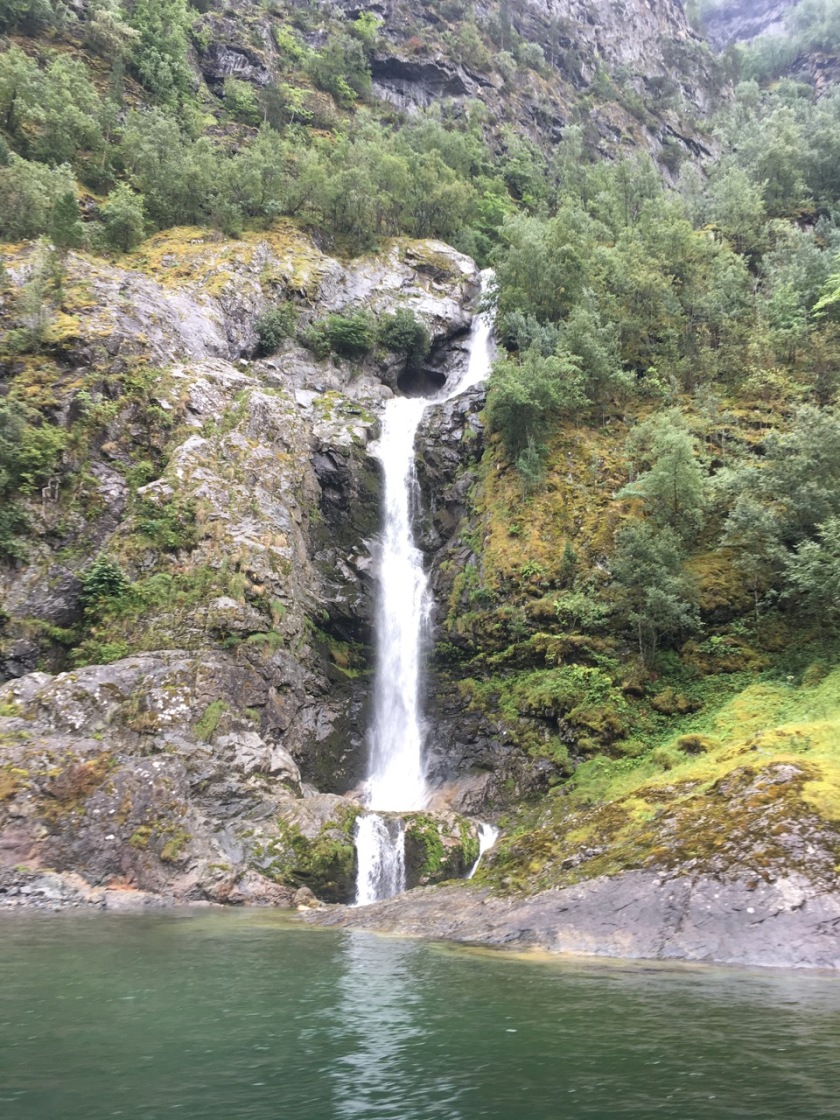
 Joel drops us off at Gudvagen on the Nærøfjorden where we board a van and drive back to the regular train, and back to Bergen. Great memories of the UNESCO World Heritage Area: “The Norwegian Western Fjords.”
Joel drops us off at Gudvagen on the Nærøfjorden where we board a van and drive back to the regular train, and back to Bergen. Great memories of the UNESCO World Heritage Area: “The Norwegian Western Fjords.”






















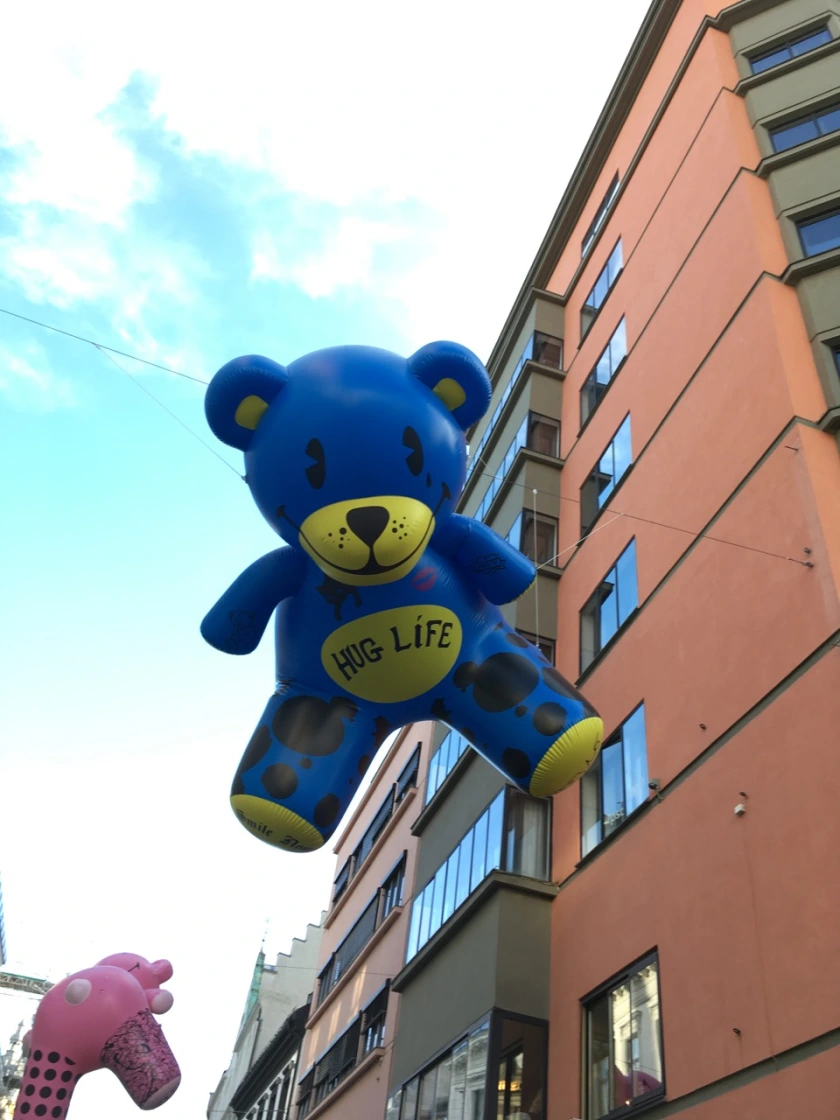
 After dinner we continue on our walk, past fountains and flowers.
After dinner we continue on our walk, past fountains and flowers.
 the Parliament building, called the Storting or Stortinget in Norwegian meaning the “great assembly”,
the Parliament building, called the Storting or Stortinget in Norwegian meaning the “great assembly”, and onto the Royal Palace.
and onto the Royal Palace. Behind the palace we find water and mushroom-like creations that amuse us.
Behind the palace we find water and mushroom-like creations that amuse us. We also enjoy some of the local street art.
We also enjoy some of the local street art.







 Some pieces are a bit startling, like the series depicting the struggle between reptile and human. With the exception of the one embracing a woman, it appears the lizard is battling with or consuming the human. One source suggests the reptile represents evil and reflects the struggle of the human condition.
Some pieces are a bit startling, like the series depicting the struggle between reptile and human. With the exception of the one embracing a woman, it appears the lizard is battling with or consuming the human. One source suggests the reptile represents evil and reflects the struggle of the human condition.


 Onto the lighter side, here are a few of our favorites.
Onto the lighter side, here are a few of our favorites. The fountain, originally designed for the outside entrance of the Norwegian Parliament building.
The fountain, originally designed for the outside entrance of the Norwegian Parliament building.


 while enjoying the SUPs in the harbor.
while enjoying the SUPs in the harbor. We head to the Astrup Fearnley Museum, designed by starchitect Renzo Piano.
We head to the Astrup Fearnley Museum, designed by starchitect Renzo Piano.

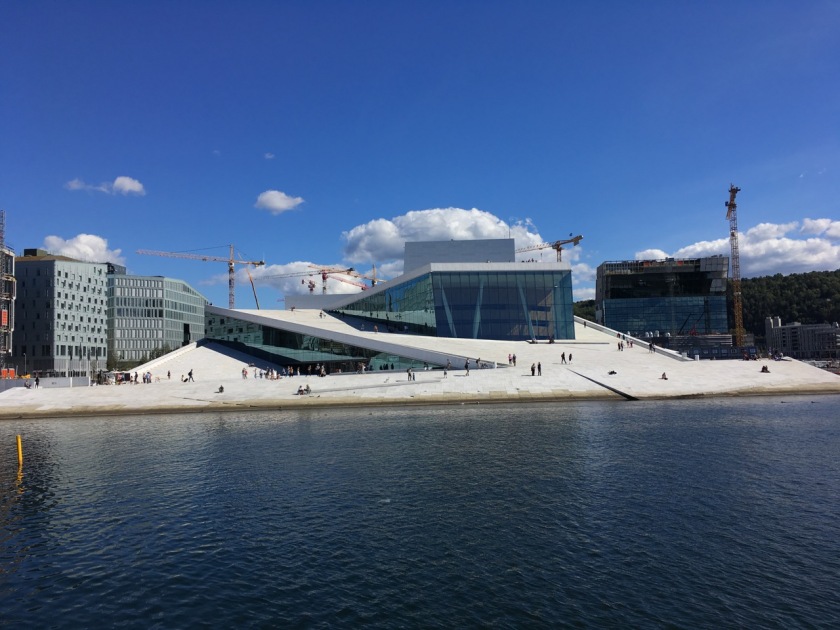







 including the ever-present cranes dotting the city and building the future Oslo.
including the ever-present cranes dotting the city and building the future Oslo. Onward we test the pedestrian bridge,
Onward we test the pedestrian bridge, with its interesting views of the Barcode district, 12 buildings designed to resemble a barcode.
with its interesting views of the Barcode district, 12 buildings designed to resemble a barcode.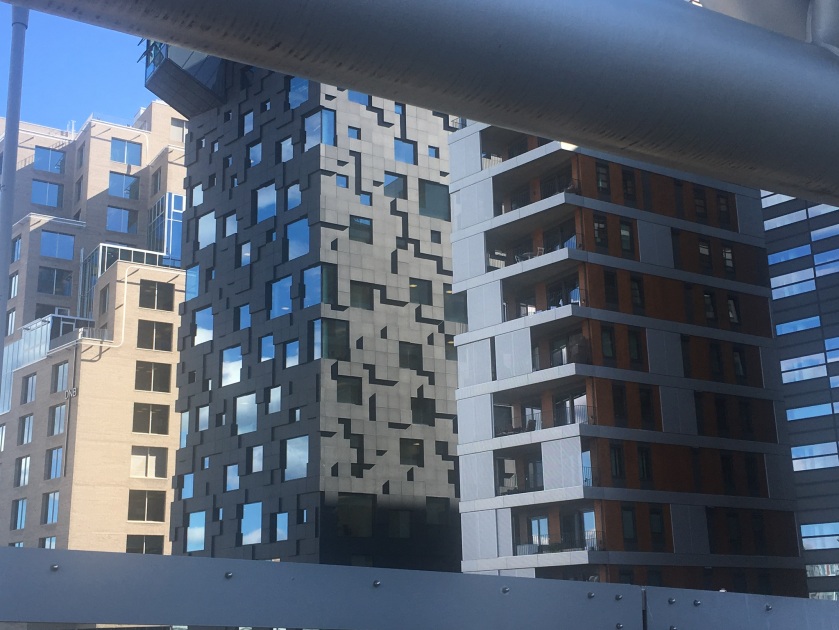









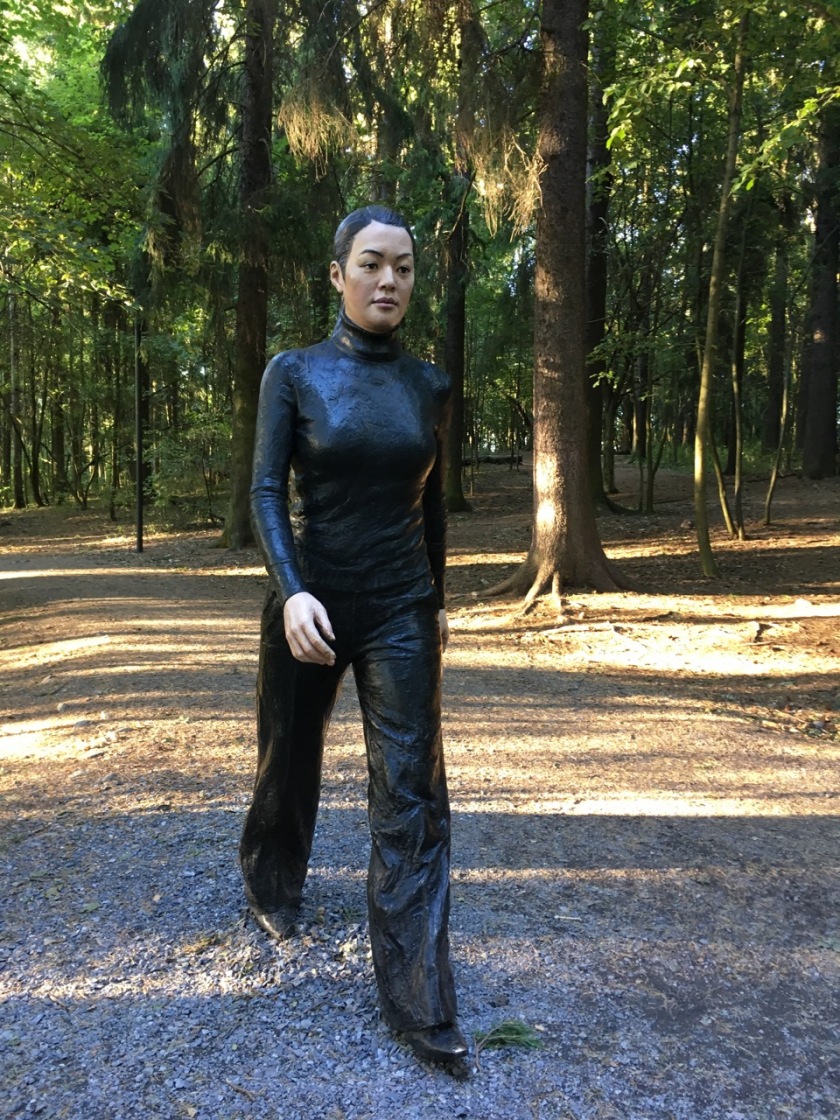
 Steinsetning – Stone Circle
Steinsetning – Stone Circle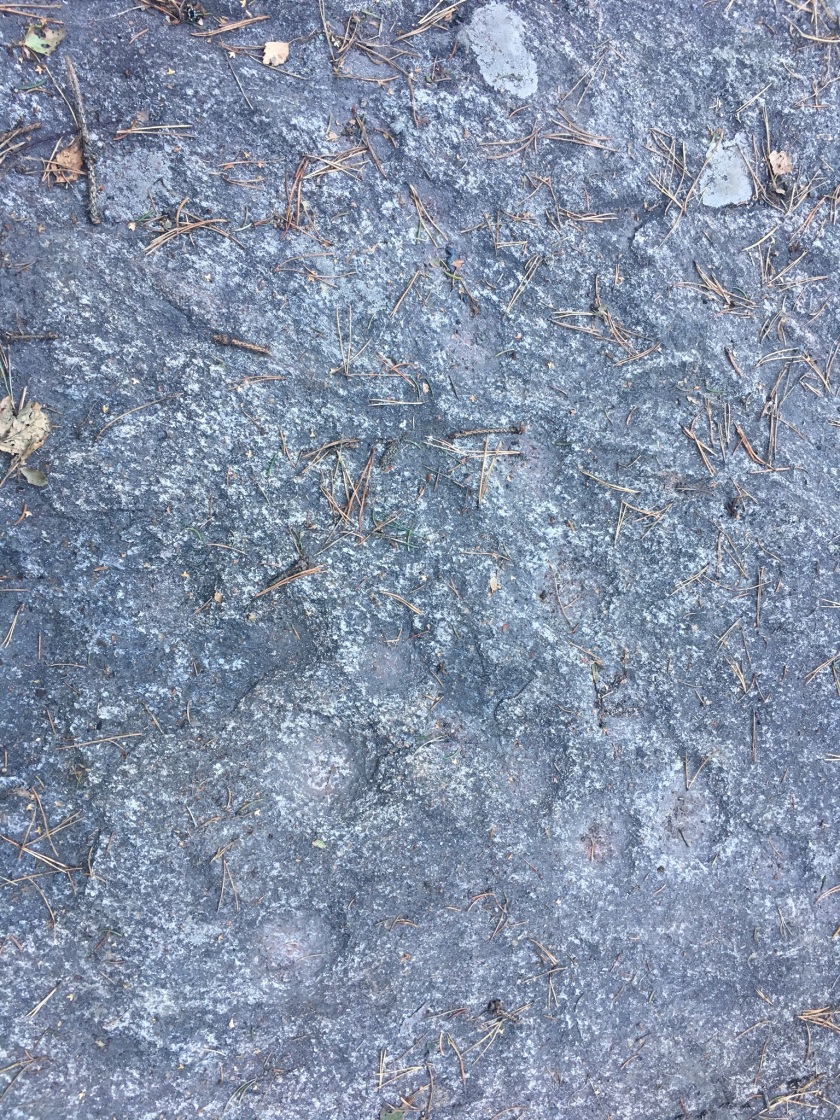



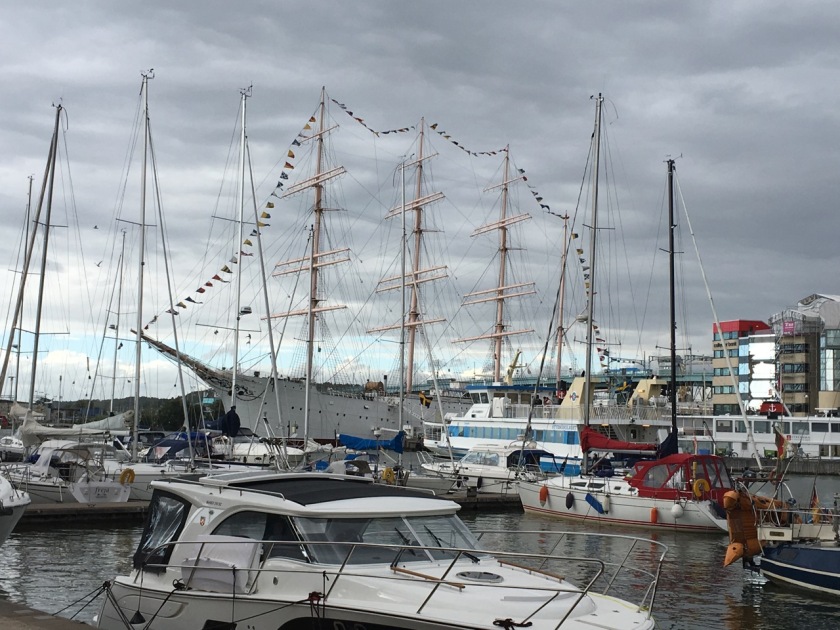 Gothenburg harbor with the large schooner
Gothenburg harbor with the large schooner  View with the “Lipstick Building” in the background
View with the “Lipstick Building” in the background




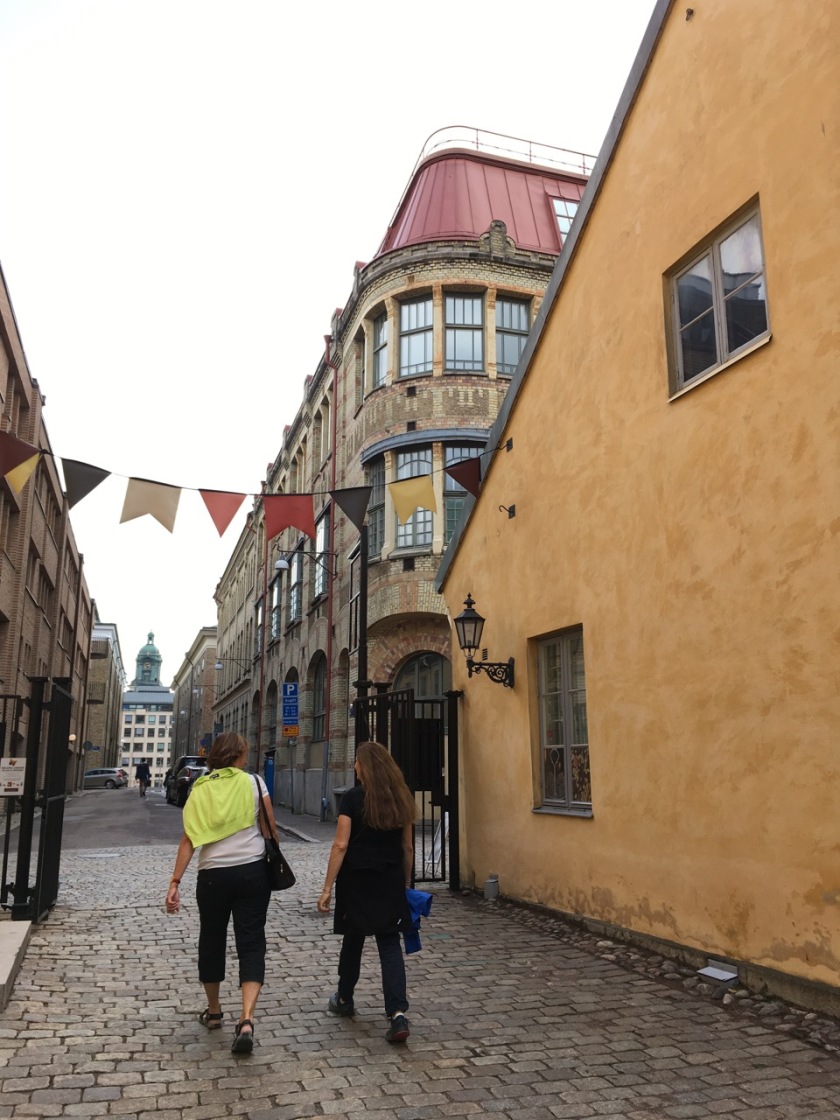
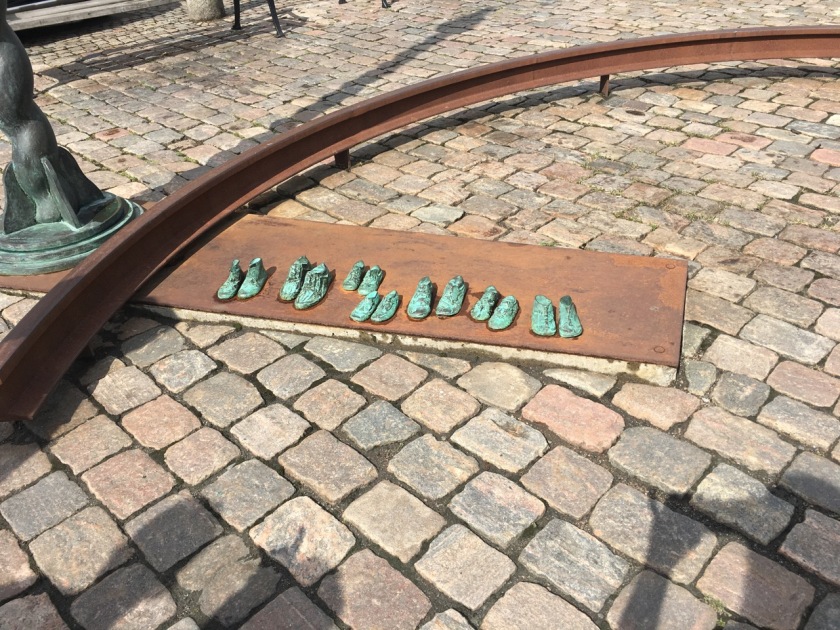 A remembrance of the Holocaust circa 2009
A remembrance of the Holocaust circa 2009



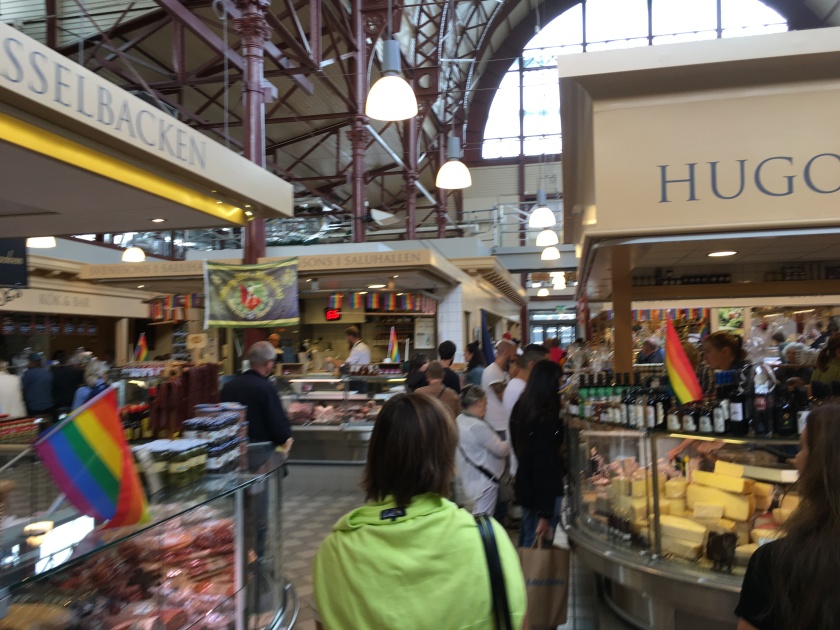















 Rainbow flags all around celebrate Euro Gay Pride the weekend after we left.
Rainbow flags all around celebrate Euro Gay Pride the weekend after we left. Outside the dining room of our hotel, this sculpture spins slowly in a Göta älv river inlet.
Outside the dining room of our hotel, this sculpture spins slowly in a Göta älv river inlet.
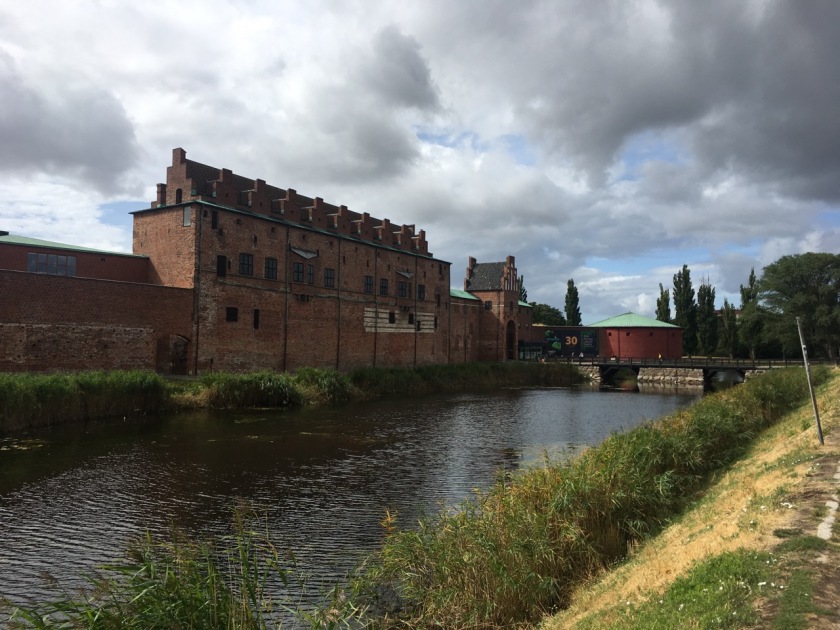






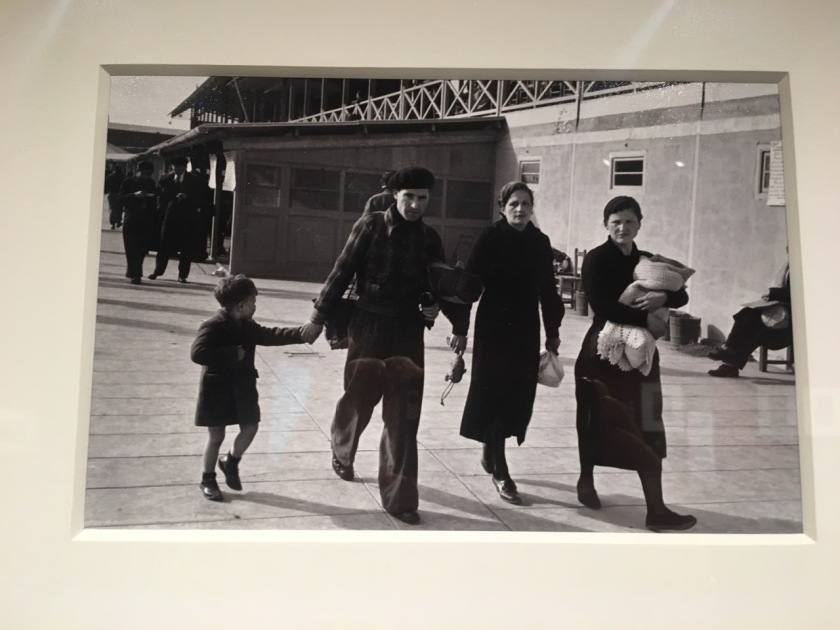










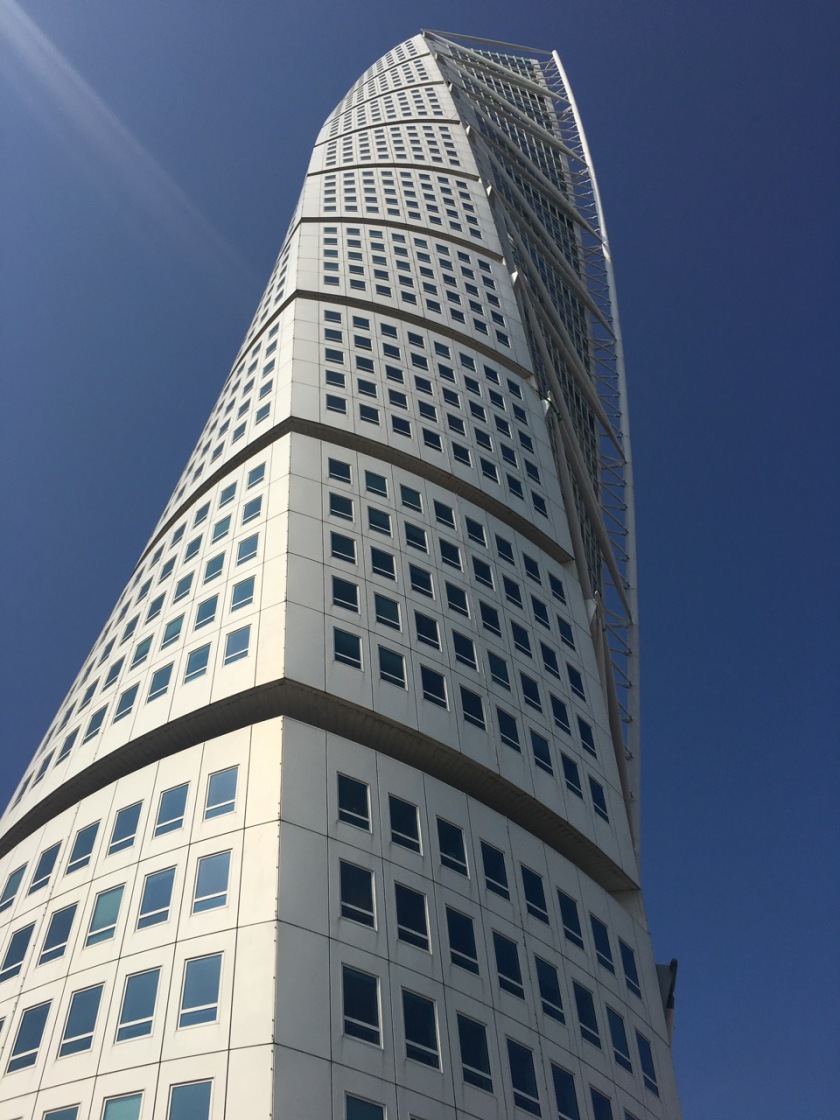
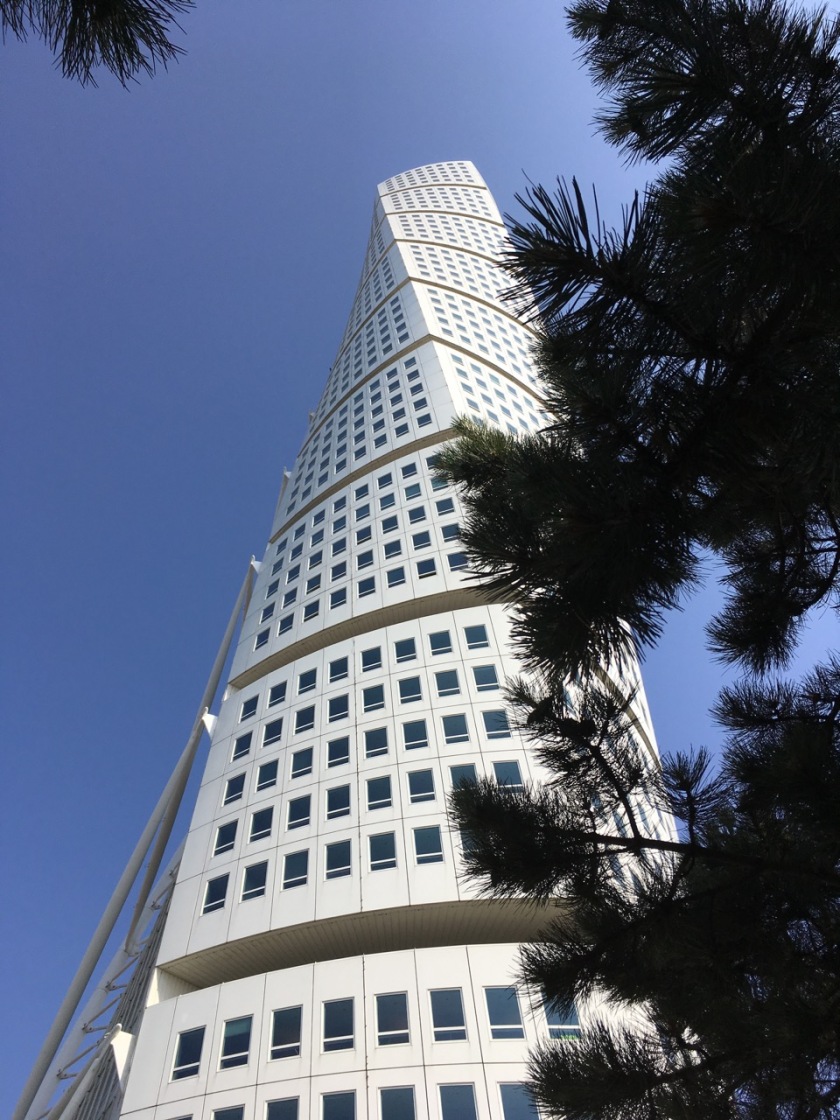


























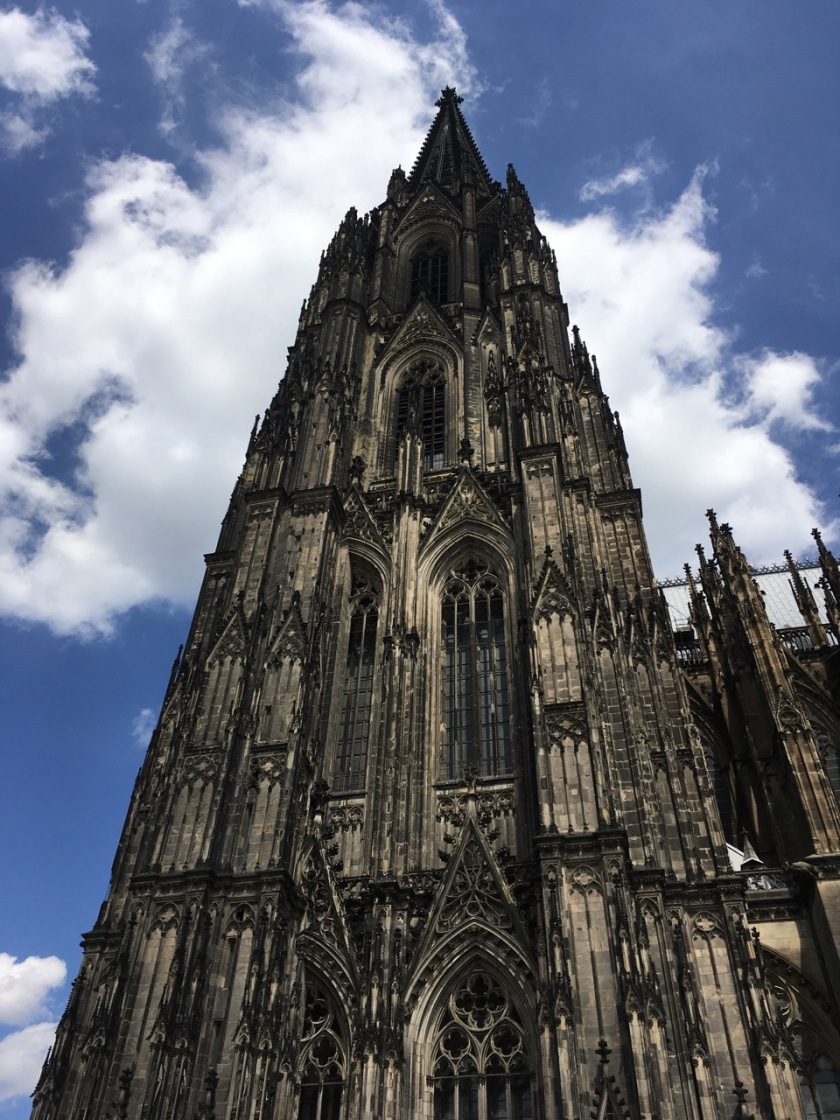




















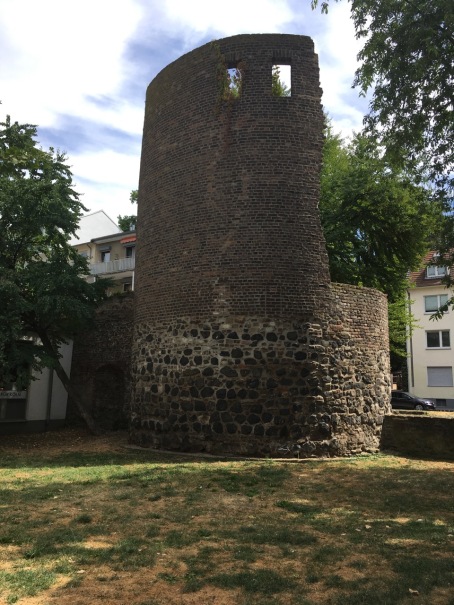


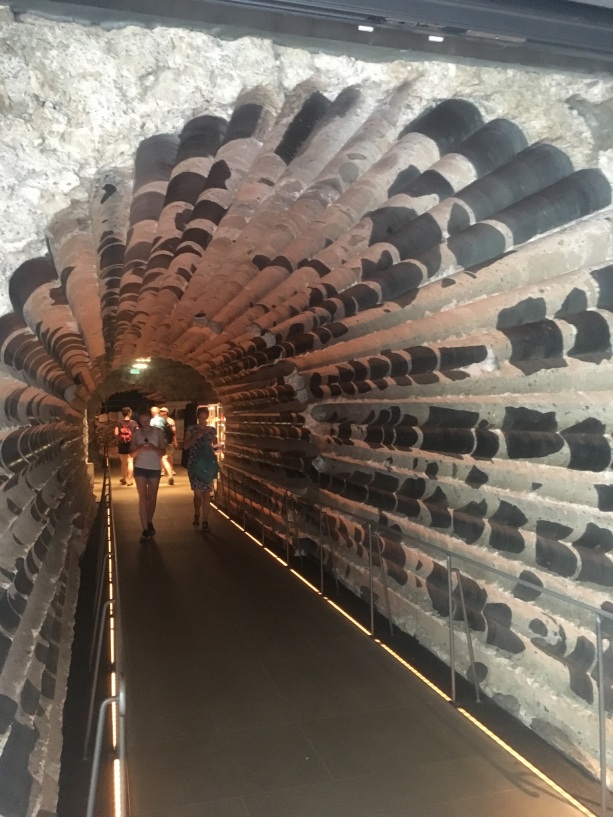














 Sol LeWitt Upside Down – K123456, Expanded 1078 Times, Doubled and Mirrored
Sol LeWitt Upside Down – K123456, Expanded 1078 Times, Doubled and Mirrored







 Claus Oldenburg, Giant Soft Swedish Light Switch (Ghost Version), 1966
Claus Oldenburg, Giant Soft Swedish Light Switch (Ghost Version), 1966

















































































































 Gottes Hand (God’s Hand) by Milly Steger.
Gottes Hand (God’s Hand) by Milly Steger.
